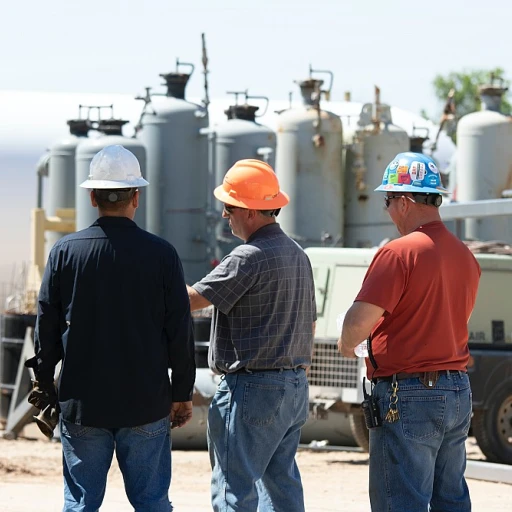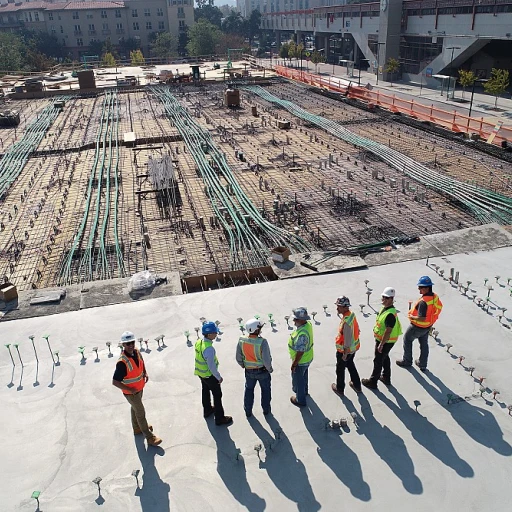
The Rise of Remote Work and Its Challenges
Embracing Remote Work and Overcoming Its Barriers
The shift towards remote work has transformed the modern workplace across the United States. An ever-growing number of professionals find themselves contributing from various locations other than the traditional office — an evolution that continues to reshape how work is done. With this shift, however, challenges in finding suitable meeting spaces arise, often leaving professionals in search of accessible and free venues. Remote work is compelling organizations to rethink the way meetings are conducted. While some companies have found success by integrating remote conferencing technologies and tech tools to enhance meeting experiences, others emphasize the significance of in-person gatherings to maintain a sense of community and personal engagement. The balance between virtual and physical scenarios is crucial, and hybrid models are increasingly common. As remote work continues to gain traction, the demand for meeting rooms that can accommodate people effectively spikes. Such spaces aren't just a necessity for large enterprises; small businesses and freelancers also rely on accessible facilities like public libraries, community centers, and coworking spaces. These venues offer ample opportunities for gathering, providing rooms with adequate capacity to host events and conferences. The accessibility of such meeting rooms brings forth the remarkable community aspect shared by various public spaces, including library meeting rooms, community centers, or even auditoriums available in your vicinity. The communal nature of these spaces fosters collaboration, networking, and productive discussions, bridging the gap posed by remote interactions. This often necessitates knowing how to optimize personal meetings effectively, from seating arrangements to using webcams with the optimal field of view, which you can further explore here. Ultimately, this adaptation reflects an exciting convergence of technology and traditional workspace dynamics — a blend that brings the accessibility of free meeting spaces to the forefront, creating inclusive environments across countless parks, branches, and event centers. For those navigating this landscape, understanding available resources is paramount, ensuring that both remote and in-person meetings are as efficient and impactful as possible.Benefits of Free Meeting Spaces
Advantages of Public Meeting Spaces
Meeting spaces dedicated to the public offer several advantages, especially for freelancers and small business owners who might need an accessible option to host an event or meet with clients. These spaces often come without the burden of expenses, providing a major benefit for those seeking flexibility and cost-effectiveness.
- Budget-Friendly Options: Most publicly accessible meeting rooms and spaces are available for free or at a very low cost, reducing overhead and keeping businesses financially sound.
- Varied Capacities: With options ranging from small study rooms to large auditoriums in a community center, these spaces can accommodate people of different group sizes and are suitable for various events and meetings.
- Conveniently Located: Meeting spaces are often strategically situated in community-focused locations like a public library, ensuring easy access by public transport or car.
- Technology-Ready Facilities: Most meeting spaces come equipped with essential technology such as projectors, internet access, and sometimes even video conferencing tools to enhance your meeting experience. To further enhance personal meetings, it's also beneficial to explore optimizing meetings with webcam optimizations.
- Opportunities for Community Engagement: Access to community rooms and spaces in local parks or libraries opens the door to engage with local community members, benefiting from diverse discussions and network opportunities.
Utilizing these free spaces not only optimizes business operations but also aligns with sustainable practices by making use of resources that are already available within the community. This makes public meeting spaces an invaluable asset for many across the United States.
Types of Free Meeting Spaces Available
Exploring Various Meeting Venues
When looking for free meeting spaces, there are a wide variety of options to choose from, each suitable for different needs and group sizes. Here are some common venues where you can hold free meetings:
- Public Libraries: Most public libraries across the United States offer meeting rooms that can accommodate people for small to medium-sized gatherings. You can often book these rooms through the library staff or their website. Many libraries also have community rooms for larger events.
- Community Centers: These facilities frequently provide event spaces that are available on a reservation basis, often with no fee. Community centers can offer conference rooms, auditoriums, and other types of event spaces to fit various group capacities.
- Parks and Recreation Buildings: Some parks include community rooms or similar venues specifically designed for meetings and group activities. These often require booking ahead of time.
- University Campuses: Many universities offer branch meeting rooms and study spaces that the public can use. These spaces can accommodate different group sizes and often come with basic technological amenities.
Many of these locations are strategically spread across urban and rural areas, making it feasible for people to find options near them. Utilizing a map or a location-based website can assist in locating the nearest available space. It's crucial to consider the room capacity to ensure you have the right size space for your group. For information on the benefits of using free meeting spaces, explore the advantages these venues offer in a modern workplace.
How to Find Free Meeting Spaces Near You
Steps to Discover Accessible Meeting Spaces in Your Vicinity
Finding accessible meeting spaces in your area doesn't have to be a daunting task. With the popularity of remote work on the rise, more options are becoming available to accommodate different needs. Here's a straightforward approach to help you locate these spaces effectively:- Utilize Online Platforms: Several websites and platforms are dedicated to helping you find meeting spaces. Whether you're in need of a conference room or a community room, these tools often provide a map and allow you to check room capacity and availability. Search for platforms that cater to public spaces in the United States, including library meeting rooms, conference rooms, and community centers.
- Visit Your Public Library: Libraries often serve as community hubs and may offer free event spaces. Check with the library staff in your local branch to learn about room availability and capacity. Library meeting rooms or study rooms can be a quiet and accessible option for smaller gatherings.
- Explore Community Centers: Many community centers offer event spaces that are ideal for hosting meetings or small events. These spaces are usually designed to accommodate people from various sectors and often include essential amenities.
- Check Local Government Websites: Often, municipal websites will list available public meeting spaces, including community rooms or larger auditoriums that you can book for free or at a low cost. These resources can be particularly useful if your meeting requires a larger space.
- Networking and Word-of-Mouth: Engaging with local groups or online forums can also be a great way to discover new meeting spaces. People often share experiences about their previous meeting locations, so you might find recommendations that suit your needs.
Tech Tools to Enhance Your Meeting Experience
Leveraging Technology for an Enhanced Gathering
In the evolving landscape of remote work, technology plays a pivotal role in enhancing the experience of using meeting spaces. Here are some tech tools and platforms that can help ensure your physical meetings are as effective as your virtual ones:- Booking Platforms: Websites and apps are available to effortlessly book meeting spaces, such as community centers, public libraries, and conference rooms. These platforms often allow you to filter by location, room capacity, and amenities. In the United States, this feature can be a great advantage to accommodate people with specific requirements.
- Room Management Systems: Utilize room management software to facilitate seamless organizing of rooms and spaces. These systems help manage meeting schedules and determine appropriate room capacities, which is vital when using shared facilities like a library meeting room or a community room.
- Collaborative Tools: Use digital tools such as cloud-based document sharing and real-time broadcasting software to engage participants both physically present and online. Bringing the event into the virtual domain helps overcome the limitations of physical spaces and broadens the scope of interaction.
- Mapping Services: Make use of map applications to locate the nearest available free meeting spaces, whether it’s a library, community center, or event auditorium. Many states have public websites that list available venues with real-time availability.
Etiquette and Best Practices for Using Free Spaces
Practicing Consideration and Respect in Shared Spaces
When utilizing free meeting spaces, such as a public library meeting room or a community room at a park community center, adhering to etiquette and best practices ensures a positive experience for everyone involved.
- Reserve in Advance: Before heading to a community center or library branch, check the availability of the meeting room. Many venues have a website or online portal where reservations can be made. This helps manage room capacity and ensure the space can accommodate people attending your meeting.
- Arrive on Time: Whether you’re hosting an event in a conference room or a library auditorium, punctuality is key. Arriving on time shows respect for others who may be waiting to use the space.
- Maintain Cleanliness: Respect the communal environment by leaving the space as tidy as you found it. Dispose of any trash properly and reset the room layout if necessary to prepare for the next group of people.
- Respect Noise Levels: In spaces such as study rooms or a library meeting room, keep noise to a minimum. This is important in public libraries where patrons may need a quiet environment.
- Be Mindful of Room Use Duration: Stick to the allocated time slot, especially in high-demand locations like community rooms in the United States. Overstaying can disrupt schedules for others.
- Follow Venue Policies: Each facility, from a community center to an auditorium, may have its own rules. Familiarize yourself with them through library staff or on-site personnel.
Being mindful of these practices not only fosters goodwill but also ensures continued access to these valuable public resources for meetings, events, and gatherings.












